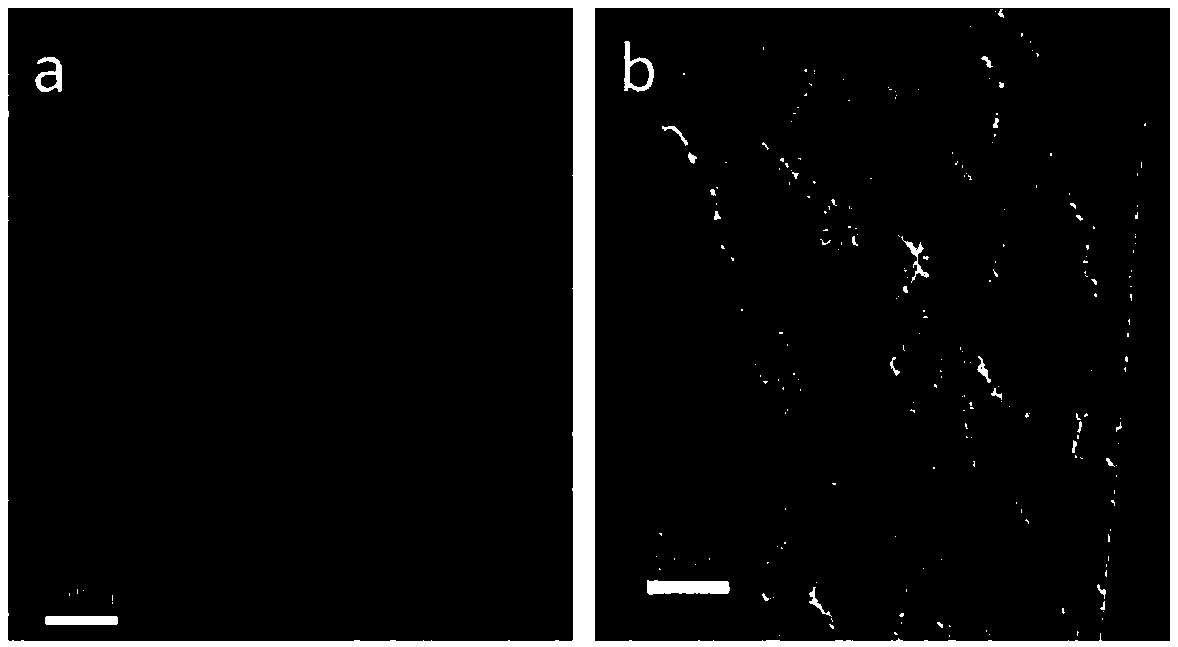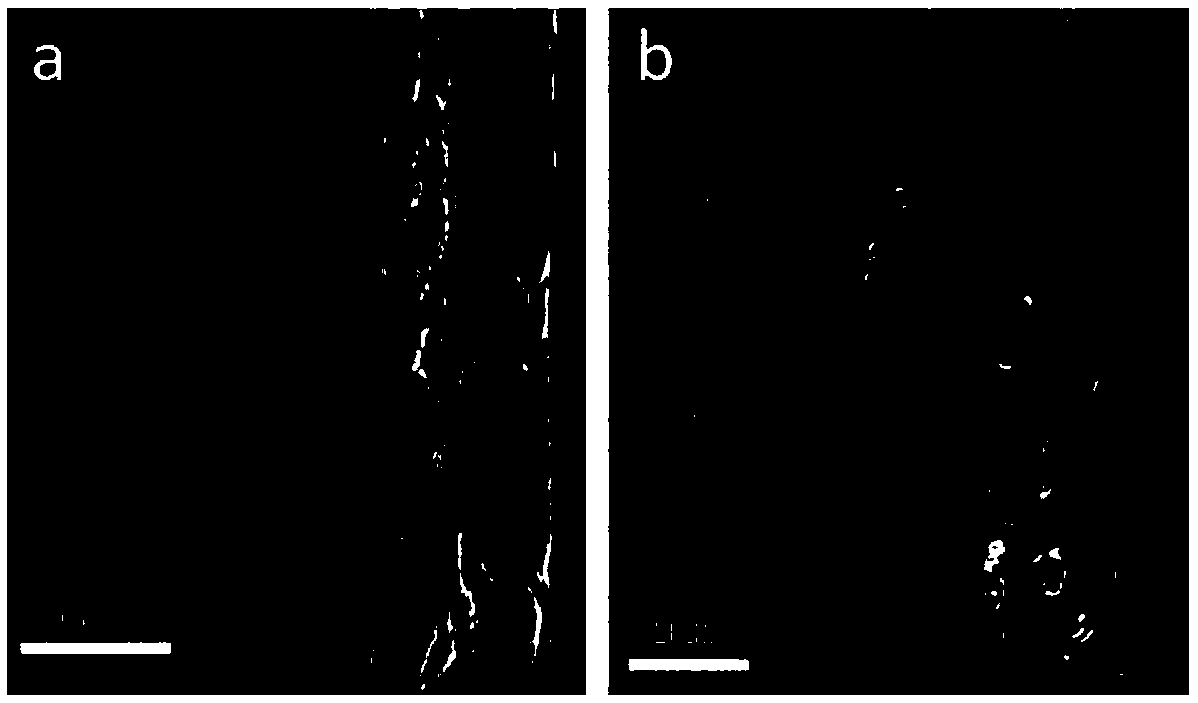Ionic POSS-containing block copolymer composite proton exchange membrane and preparation method thereof
A technology of block copolymer and proton exchange membrane, which is applied in the field of ionic POSS-containing block copolymer composite proton exchange membrane and its preparation, can solve the problems of low proton conductivity, easy swelling, dimensional instability, etc. The method is simple, time-consuming, and the effect of improving proton conductivity
- Summary
- Abstract
- Description
- Claims
- Application Information
AI Technical Summary
Problems solved by technology
Method used
Image
Examples
Embodiment 1
[0056] (1) Spread a 50% sulfonated polysulfone solution dissolved in N,N-dimethylformamide with a concentration of 0.3g / mL on a glass plate, and then put it into the toluene solution and let it stand until After 30 minutes, the membrane on the glass plate turns white completely, and a porous 50% sulfonated polysulfone matrix membrane is obtained;
[0057] (2) Immediately after the porous membrane on the glass plate in step (1) is immersed in a concentration of 0.05g / mL toluene dissolved block ratio: PMMA: POSS-(PMMA-PS) of PS=1:7 8 Block ratio: PMMA:PS=1:7 solution, let it stand for about 10min;
[0058] (3) Put the composite porous membrane obtained in step (2) into an oven at 80° C. for 10-12 hours to dry, and then peel off the membrane on the glass plate to obtain a composite proton exchange membrane.
[0059] The performance test comparative data of table 1 embodiment 1 and comparative example 1
[0060]
Embodiment 2
[0062] (1) Spread 60% sulfonated polysulfone solution dissolved in N,N-dimethylformamide with a concentration of 0.3g / mL on a glass plate, and then put it in toluene solution and let it stand for 25min Until the membrane on the glass plate turns white completely, a porous 60% sulfonated polysulfone matrix membrane is obtained;
[0063] (2) Immediately afterwards, immerse the porous membrane on the glass plate in step (1) with a concentration of 0.05g / mL in the POSS-PMMA-PS solution dissolved in toluene, and let it stand for about 15min;
[0064] (3) Put the composite porous membrane obtained in step (2) into an oven at 80° C. for 10-12 hours to dry, and then peel off the membrane on the glass plate to obtain a composite proton exchange membrane.
Embodiment 3
[0066] (1) Spread a 50% sulfonated polysulfone solution with a concentration of 0.3 g / mL dissolved in a mixed solvent of N,N-dimethylformamide and toluene (volume ratio 9 / 1) on a glass plate Then put it into the toluene solution and let it stand for 30min until the membrane on the glass plate turns white completely to obtain a porous 50% sulfonated polysulfone matrix membrane;
[0067] (2) Immediately afterwards, the porous membrane on the glass plate in step (1) is immersed in toluene to dissolve the concentration of 0.05g / mL block ratio: PMMA:PS=1:4 POSS-(PMMA-PS) 8 In the solution, let it stand for about 10 minutes;
[0068] (3) Put the composite porous membrane obtained in step (2) into an oven at 80° C. for 10-12 hours to dry, and then peel off the membrane on the glass plate to obtain a composite proton exchange membrane.
PUM
| Property | Measurement | Unit |
|---|---|---|
| concentration | aaaaa | aaaaa |
| concentration | aaaaa | aaaaa |
| concentration | aaaaa | aaaaa |
Abstract
Description
Claims
Application Information
 Login to View More
Login to View More - R&D
- Intellectual Property
- Life Sciences
- Materials
- Tech Scout
- Unparalleled Data Quality
- Higher Quality Content
- 60% Fewer Hallucinations
Browse by: Latest US Patents, China's latest patents, Technical Efficacy Thesaurus, Application Domain, Technology Topic, Popular Technical Reports.
© 2025 PatSnap. All rights reserved.Legal|Privacy policy|Modern Slavery Act Transparency Statement|Sitemap|About US| Contact US: help@patsnap.com



